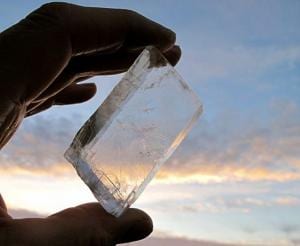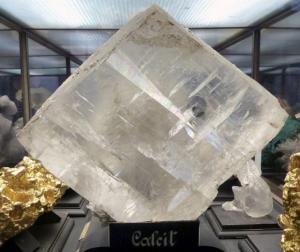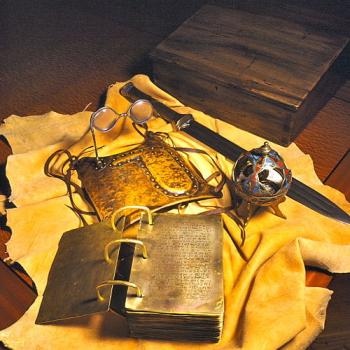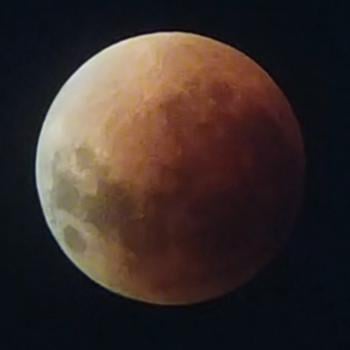I’m fascinated by the physical and symbolic characteristics of rocks, glass, sunstones (tesserae).
In “Come Follow Me” this week, we’ve reached one of my all-time favorite physical object stories.
And it came to pass that the brother of Jared, (now the number of the vessels which had been prepared was eight) went forth unto the , which they called the mount , because of its exceeding height, and did out of a rock sixteen small stones; and they were white and clear, even as transparent ; and he did carry them in his hands upon the top of the mount, and cried again unto the Lord, saying:
O Lord, thou hast said that we must be encompassed about by the floods. Now behold, O Lord, and do not be with thy servant because of his weakness before thee; for we know that thou art holy and dwellest in the heavens, and that we are before thee; because of the our have become evil continually; nevertheless, O Lord, thou hast given us a commandment that we must call upon thee, that from thee we may receive according to our desires.
In the past several years, scholars have explored the idea of Viking sunstones — crystals used by the Vikings as GPS while sailing north Atlantic seas.

Several types of minerals—especially ultrapure crystals of calcite, cordierite, and tourmaline—can split a beam of sunlight to form two images, with polarized light taking a slightly different path than the main beam. By looking at the sky through such a crystal and then rotating it so the two images are equally bright, it’s possible to spot the rings of polarized light that surround the sun, even under cloudy skies. Identifying the sun’s location would give mariners a sure point of reference during long sea journeys.

Modern Navigation with Sunstones
Using computer simulation, researchers found that using various types of crystal sunstones yield positive seafaring results. However, if the sunstone is consulted every three hours, the ship had a 92%-100% arrival rate versus only 32%-59% success when checked every four hours.
The whole concept of using sunstones in navigating, of course, reminds me of the stones the Brother of Jared “did molten from a rock” on an exceedingly high mountain.
I wanted to read Hugh Nibley’s “Strange Ships and Shining Stones” but couldn’t find it online anymore. However, I found a page on Fair Mormon citing Hugh Nibley’s chapter on the Jaredite shining stones.
The Brother of Jared’s Shining Stones
But who gave the brother of Jared the idea about stones in the first place? It was not the Lord, who left him entirely on his own; and yet the man went right to work as if he knew exactly what he was doing. Who put him on to it? The answer is indicated in the fact that he was following the pattern of Noah’s ark, for in the oldest records of the human race the ark seems to have been illuminated by just such shining stones.We have said that if the story of the luminous stones was lifted from any ancient source, that source was not the Talmud (with which the Book of Mormon account has only a distant relationship) but a much older and fuller tradition, with which the Ether story displays much closer affinities. The only trouble here is that these older and fuller traditions were entirely unknown to the world in the time of Joseph Smith, having been brought to light only in the last generation. But since the critics have said again and again that the story of the shining stones is the last word in pure nonsense and the surest index of a cracked brain, they deserve to be shown just how ancient and widespread this particular type of nonsense really is.
First of all, let us recall that “the brother of Jared . . . did molten out of a rock sixteen small stones; and they were white and clear, even as transparent glass” (Ether 3:1). Now the oldest traditions of India have a good deal to say about a wonderful stone that shines in the dark.23 This gem can be produced only by subjecting certain types of stone (or the heart of a poisoned person) to terrific heat—it must in fact be kept in an exceedingly hot fire for no less than nine years!24 By this process was supposed to be produced a perfectly clear, transparent crystal, which “would illuminate even the deepest darkness and sometimes shine as brightly as the sun.”25 Now this strange belief did not originate in India, though it is very ancient there; Meyer and Printz have both traced it to distant China and the West. It receives prominent mention by certain leading thinkers of the Middle Ages, including the great Albertus Magnus. It was even believed in Europe that the Holy Grail was such a jewel and of such fiery power that the Phoenix bird cremated itself in its heat and was thus reborn, for among other things the stone had the power of regeneration.26
The common name by which this wonderful shining stone was designated was pyrophilus or “friend of fire,” usually described as a perfectly transparent crystal and called in the Indian sources (which are the fullest) “Moonfriend” and Jalakanta. The last term is significant, for it means “that which causes the waters to part,” the peculiar power and virtue of the stone, the most celebrated of all its many miraculous powers being a strange capacity for enabling its possessor to pass unharmed through the depths of the waters.27
So we have a very ancient, widespread tradition of a clear, transparent stone, formed by a smelting process requiring terrific heat, that shines in the dark and guides and preserves its owner beneath the waves. Surely a strange combination of clues, and yet one that has led the experts (to whom, of course, the book of Ether meant nothing at all) directly and unerringly to a single source—the story of the Flood and the ark! It became apparent that the story and legend of the pyrophilus stone did not originate in India when certain classical sources directed the scholars to the old Mesopotamian Flood stories. The philosopher Aesculapius, in a letter to the Emperor Augustus, for example, gave an authentic description of the pyrophilus, closely agreeing with the Indian accounts, but with the added information that such a stone had been the prized possession of Alexander the Great, who carried it always under his belt and would never part with it for a moment, until one day, wishing to bathe in a stream, he laid his belt and jewel on the bank, where a serpent promptly seized the stone, carried it off, and vomited it up into the Euphrates.28
That this story is no fantasy of the medieval imagination is clear from the fact that Aristotle, Alexander’s teacher, mentioned such a stone in a lost writing,29 while long before the time of Alexander and Aristotle the story of the stone and its loss was identified with a much older Greek hero.[1]
Notes
Source:Nibley:CW06:Ch24:3:The Brother of Jared’s Shining Stones
Hugh W. Nibley, An Approach to the Book of Mormon, 3rd edition, (Vol. 6 of the Collected Works of Hugh Nibley), edited by John W. Welch, (Salt Lake City, Utah : Deseret Book Company ; Provo, Utah : Foundation for Ancient Research and Mormon Studies, 1988).
All of this is great food for thought to consider how to apply these scripture verses to our lives and transform ourselves into holy vessels relying on the light of the Lord to guide our journey.













